#Data Scraped from Rakuten
Explore tagged Tumblr posts
Text
How to Effortlessly Scrape Product Listings from Rakuten?
Use simple steps to scrape product listings from Rakuten efficiently. Enhance your e-commerce business by accessing valuable data with web scraping techniques.
Know More : https://www.iwebdatascraping.com/effortlessly-scrape-product-listings-from-rakuten.php
#scraping Rakuten's product listings#Data Scraped from Rakuten#Scrape Product Listings From Rakuten#Rakuten data scraping services#Web Scraping Rakuten Website#Web scraping e-commerce sites
0 notes
Text
What is data scraping? Purpose and examples of data scraping
Purpose of data scraping
Scraping can collect information on the Internet and process the acquired information. The more detailed the data is extracted, the deeper the data analysis will be.
Data scraping tools
There are many web scraping tools developed to get the information you need on your website. ScrapeStorm is a web scraping tool based on artificial intelligence. It does not require programming and scrapes data from most websites. 1-Click automatically extracts data from your website.
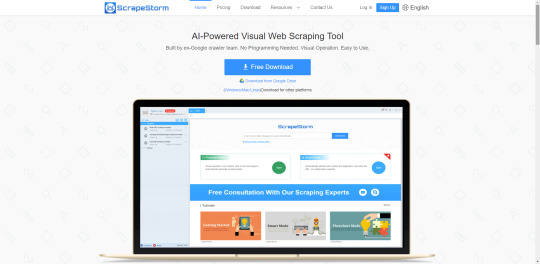
Grasp popular topics
Video media such as TikTok and Instagram have been popular for the past few years. However, for video creators, updating the topic is also quite fast. At such times, data collection plays a role in quickly grasping the topics that are currently in fashion. Collect popular topics and ideas, or collect data such as comments and views.

Marketing
Since online shopping has been welcomed by people, Amazon, Yahoo! Shopping, Rakuten Ichiba, and various online shopping sites enter people’s daily lives. For sellers, collecting data such as product reviews and overall scores is important for marketing. It is also important to compare the prices of products on each online shopping site. Timely adjustment of prices will surely not separate into data collection.

Finance
A large amount of data is required for investments such as real estate investment, investment trusts, and stock prices. It can be very difficult to predict a fast-moving market. It may be useful for financial investment by collecting and analyzing data since several months.
This time, we will introduce examples of use in video media, marketing, etc., but of course, there are only the above areas. One thing to note is that it is against the law to send a malicious request by scraping! Please use it correctly to discuss Robots and comply with the law.

0 notes
Text
Rakuten Product Details Scraping
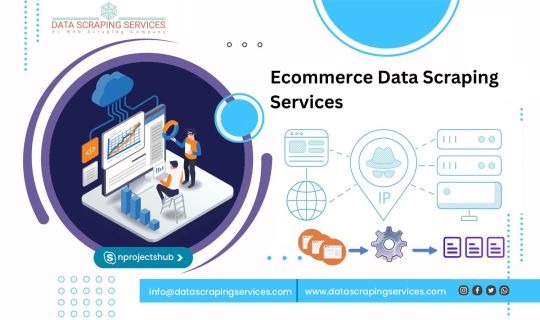
Elevate Your E-Commerce Strategy: Unleashing the Power of Rakuten Product Details Scraping by DataScrapingServices.com
In the competitive landscape of e-commerce, staying ahead in the market requires not only innovative products but also strategic insights into the offerings of competitors and industry trends. DataScrapingServices.com introduces a game-changing solution with its Rakuten Product Details Scraping services, offering businesses valuable insights into the vast e-commerce platform. This article explores the significance of Rakuten Product Details Scraping and the unique advantages provided by DataScrapingServices.com.
Navigating the Rakuten E-Commerce Universe
As one of the world's leading e-commerce platforms, Rakuten hosts a diverse array of products from various sellers. The Rakuten Product Details Scraping services by DataScrapingServices.com enable businesses to systematically extract detailed information about products listed on Rakuten. This comprehensive approach empowers businesses with actionable data to refine their product strategies, optimize pricing, and stay competitive in the ever-evolving e-commerce landscape.
1. Competitive Analysis for Informed Decision-Making
For businesses operating in the e-commerce space, understanding the product landscape of competitors is critical. Rakuten Product Details Scraping allows businesses to conduct in-depth competitive analysis by extracting information such as product titles, descriptions, prices, and customer reviews. This granular data provides valuable insights into market trends, pricing strategies, and customer preferences, enabling businesses to make informed decisions in their product offerings.
2. Pricing Optimization and Market Positioning
Effective pricing is a key element in the success of any e-commerce business. Rakuten Product Details Scraping services offer businesses the ability to monitor and analyze pricing trends across the platform. By extracting data on product prices, discounts, and promotional offers, businesses can optimize their pricing strategies, ensuring competitiveness and maximizing profitability in the dynamic e-commerce market.
3. Product Catalog Enrichment
Maintaining a rich and diverse product catalog is essential for attracting and retaining customers. Rakuten Product Details Scraping allows businesses to enrich their product catalogs by extracting detailed information about product specifications, features, and images. This enriched product data can be utilized to enhance product listings, improve search relevance, and provide a more engaging shopping experience for customers.
The DataScrapingServices.com Advantage
DataScrapingServices.com stands as a trusted provider of web scraping solutions, and its expertise in Rakuten Product Details Scraping offers distinct advantages for businesses seeking to optimize their e-commerce strategies.
1. Precision and Real-Time Updates
DataScrapingServices.com employs advanced scraping technologies to ensure the precision and real-time nature of the scraped Rakuten product details. This commitment to accuracy provides businesses with insights that reflect the current e-commerce landscape, allowing for agile decision-making and timely adjustments to product strategies.
2. Comprehensive Data Extraction
Recognizing the diverse needs of businesses, DataScrapingServices.com ensures comprehensive data extraction from Rakuten. This includes details such as product titles, descriptions, prices, images, and customer reviews. This comprehensive approach allows businesses to have a holistic view of the Rakuten product landscape, facilitating informed decision-making.
3. Customization for Specific Requirements
Understanding that businesses may have unique requirements, DataScrapingServices.com provides customization options for its Rakuten Product Details Scraping services. This flexibility enables businesses to tailor the scraping process based on specific criteria, ensuring a more personalized and targeted approach aligned with their e-commerce goals.
4. Data Security and Ethical Practices
In an era where data integrity and security are paramount, DataScrapingServices.com prioritizes compliance with legal standards and terms of use. Rakuten Product Details Scraping services adhere to industry regulations, ensuring that businesses extract valuable insights ethically and within legal boundaries.
Best eCommerce Data Scraping Services
Web Scraping eBay.co.uk Product Listings
Amazon Reviews Scraping
Extract Zalando Product Prices
Argos Product Listing Scraping
JohnLewis Product Details Scraping
Sephora Product Prices Scraping
G2 Product Information Extraction
Capterra Product Reviews Scraping
eBay.co.uk Product Prices Scraping
Amazon.de Product Prices Scraping
Best Rakuten Product Details Scraping | Rakuten Scraper Services in USA:
Kansas City, Memphis, New Orleans, Springs, Sacramento, Tucson, Washington, Portland, Atlanta, Seattle, San Jose, San Antonio, Raleigh, Colorado, Jacksonville, Omaha, Louisville, Denver, Dallas, Miami, Los Angeles, Philadelphia, Bakersfield, Milwaukee, Tulsa, Las Vegas, Chicago, Long Beach, Arlington, Austin, Columbus, San Francisco, Nashville, Honolulu, Wichita, Orlando, Oklahoma City, Indianapolis, Boston, El Paso, Fort Worth, Virginia Beach, San Diego, Albuquerque, Houston and New York.
Conclusion
Rakuten Product Details Scraping by DataScrapingServices.com emerges as a strategic asset for businesses aiming to thrive in the competitive world of e-commerce. By unlocking the power of scraped product data, businesses can refine their competitive strategies, optimize pricing, and enhance their product catalogs. Choose DataScrapingServices.com for a strategic partnership that transforms raw Rakuten product data into a valuable asset, driving success and growth in the dynamic and competitive e-commerce landscape.
Website: Datascrapingservices.com
Email: [email protected]
#rakutenproductdetailsscraping#rakutenscraper#ecommercedatascraping#ecommerceproductscraping#ecommerceproductlistingscraping#datascrapingservices#webscrapingexpert#websitedatascraping
0 notes
Text
How To Perform E-Commerce Data Scraping On Ten Different Platforms
How To Perform E-Commerce Data Scraping On Ten Different Platforms?

Web scraping, also called data scraping, is a potent method for extracting valuable information from e-commerce platforms such as Amazon and Walmart. Using programming languages like JavaScript and the querySelector function, one can systematically gather the necessary data to enhance decision-making processes. In this article, we will delve into the efficient data extraction from e-commerce websites on a large scale and underscore the significance of this practice. We will explore various techniques and optimal approaches b, along with guidance on leveraging JavaScript and querySelector for data extraction.
List of Data Fields

Product Name
Product Description
Product Codes
RRP
Special Price
Category
Brand
Availability
Product URL
Images
Attributes
Reviews
Ratings
Variants
List of 10 E-Commerce Websites
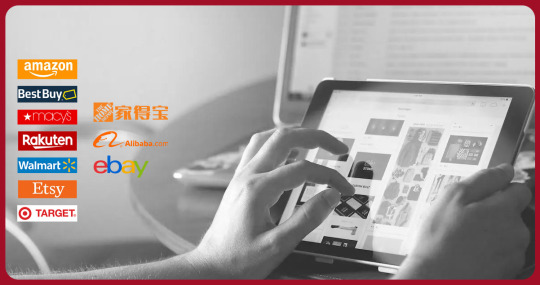
AMAZON: Amazon's e-commerce website is a global retail juggernaut that has revolutionized online shopping. Amazon has become synonymous with convenience and choice, offering an unparalleled selection of products across a multitude of categories. With a user-friendly interface, customers can effortlessly navigate through an extensive array of items, read detailed product descriptions, and make informed decisions based on user reviews and ratings. Scrape Amazon e-commerce data for competitive analysis.
Rakuten: Rakuten's e-commerce website is a prominent global online marketplace offering a diverse range of products and services to customers worldwide. Originally founded in Japan, Rakuten has expanded its presence to become a multifaceted platform that connects consumers with an extensive array of goods, from electronics and fashion to books and home essentials. Scrape Rakuten e-commerce data for price optimization.
TARGET: Target's e-commerce website is a well-established and popular online retail destination in the United States. Known for its wide range of products spanning categories like electronics, home and furniture, clothing, beauty, groceries, and more, Target offers a comprehensive shopping experience to its customers. The website features a user-friendly interface, enabling shoppers to browse and search for products, read detailed product descriptions, and view customer reviews. Scrape Target e-commerce data for market research.
MACY'S: Macy's e-commerce website is a prominent online retail platform that complements the well-known brick-and-mortar department store chain. By catering to diverse consumer needs, Macy's online platform offers various products spanning fashion, beauty, home goods, electronics, and more. The website provides an intuitive and user-friendly interface, making it easy for customers to navigate, search for products, and explore various categories. Scrape Macy's e-commerce data for inventory management.
BEST BUY: Best Buy's e-commerce website is a leading online destination for consumer electronics, appliances, and technology products in the United States and beyond. Renowned for its extensive selection of products, it caters to a wide range of tech enthusiasts, home appliance shoppers, and entertainment seekers. The website boasts a user-friendly interface that simplifies product discovery, allowing customers to browse, compare, and purchase items effortlessly. Scrape Best Buy e-commerce data for content aggregation.
eBay: eBay is a globally recognized and influential e-commerce platform that connects buyers and sellers worldwide. Founded in 1995, eBay has become one of the largest online marketplaces, facilitating the sale of a wide variety of new and used goods. The platform's unique auction-style listings and traditional fixed-price listings offer a diverse and dynamic shopping experience. Scrape eBay e-commerce data for dynamic pricing.
WALMART: Walmart's e-commerce website is a significant online extension of one of the world's largest retail chains. Founded in 1962, Walmart has established itself as a retail giant with a diverse range of products, and its e-commerce platform reflects this breadth and depth. The website offers customers a convenient and extensive shopping experience focusing on value, variety, and accessibility. Walmart's e-commerce website includes many products, including groceries, electronics, apparel, and home goods. Users can browse products easily, read detailed descriptions, and explore customer reviews to make informed purchasing decisions. Scrape Walmart e-commerce data for customer sentiment analysis.
ETSY: Etsy's e-commerce platform is a unique and thriving online marketplace specializing in handmade, vintage, and craft items. Founded in 2005, Etsy has grown into a global community of artisans, crafters, and vintage collectors who sell their one-of-a-kind and creative products on the platform. Etsy's website provides a distinctive and personalized shopping experience, catering to those seeking handmade or unique items. The heart of Etsy's e-commerce website is its diverse catalog of products, including handmade jewelry, clothing, home decor, art, and vintage collectibles. Scrape Etsy e-commerce data for demand forecasting.
Alibaba: Alibaba's e-commerce platform is one of the world's largest and most influential online marketplaces. Founded in 1999 by Jack Ma, Alibaba has grown into a global e-commerce and technology conglomerate with a diverse portfolio of businesses. Alibaba's primary e-commerce websites include Alibaba.com, Taobao, Tmall, and AliExpress, each catering to different markets and customer needs. Alibaba.com is a business-to-business (B2B) platform that connects manufacturers, wholesalers, and suppliers with global buyers. Scrape Alibaba e-commerce data for price comparison.
THE HOME DEPOT: The Home Depot's e-commerce website is a leading online home improvement and construction retail platform. Founded in 1978, The Home Depot has become one of the largest home improvement retailers globally, with physical stores and a robust online presence. The Home Depot's e-commerce website offers many products and services tailored to homeowners, contractors, and do-it-yourself enthusiasts. Customers can explore many items, including building materials, tools, appliances, home decor, gardening supplies, and more. Scrape The Home Depot e-commerce data to understand buying behavior.
About E-Commerce Data Scraping

In today's digital era, data holds immense value, driving decision-making, fostering innovation, and enhancing competitiveness across various industries. Data scraping e-commerce websites emerged as a crucial process for extracting insights and supporting informed business decisions, especially when dealing with renowned websites like Amazon and Walmart.
Before diving into data extraction from these websites, it's paramount to grasp the concept of data and identify the specific data types that align with your business objectives. It may encompass collecting diverse data types, such as Product Details Pages (PDPs), search results, seller profiles, customer reviews, ratings, travel and booking data, event information, ticket details, and other pertinent data points.
Web scraping stands out as the most prevalent technique for data extraction, involving the retrieval of information from the HTML code of websites. A fundamental aspect of successful data scraping involves comprehending the website's structure and pinpointing the desired data locations, including product details pages (PDPs). Amazon and Walmart, as two prominent e-commerce platforms, often serve as targets for data extraction efforts. Employing tools and programming languages like JavaScript and Python can streamline the data extraction process from these websites. Nonetheless, scaling up data extraction can introduce challenges, including the need for proxies and strategies to evade anti-bot detection mechanisms.
Importance of Data Scraping for E-Commerce

As a business owner, you understand the critical importance of an in-depth understanding of your products to succeed. Comprehensive knowledge of each product, including pricing and specifications, is essential. However, manually collecting such information can be daunting and time-consuming, especially when dealing with a substantial inventory.
It is precisely where data scraping proves invaluable. Data scraping techniques to extract product details from websites enable you to efficiently compile all the information required to enhance your Product Details Pages (PDPs). After determining the specific data types that align with your business model, you can utilize the extracted data for various purposes, including Market Intelligence, Pricing and Competitor Analysis, Product Research and Development, Customer Sentiment Analysis, Inventory Management, and Demand Forecasting.
Usage of JavaScript to Extract Data from Websites

JavaScript stands out as one of the most widely employed programming languages in web development, and its versatility extends to data extraction from websites. JavaScript can be a powerful tool for scraping data from web pages, including valuable information like product descriptions, prices, images, reviews, and more.
Here's a breakdown of how JavaScript extracts data from e-commerce websites efficiently:
Inspect the Webpage: Begin by inspecting the webpage to pinpoint the specific HTML elements containing the data you intend to scrape. The browser's developer tools are handy for this task, allowing you to delve into the webpage's HTML code.
Leverage DOM Manipulation: You can utilize DOM (Document Object Model) manipulation techniques after identifying the HTML elements housing your target data. It uses JavaScript to access and modify these HTML elements, enabling data extraction.
Data Parsing: It is typically unstructured once the data is from HTML elements. You need to parse it into a structured format like JSON or CSV to make it usable. Parsing transforms the raw data into a structured form for analysis.
Automation: For large-scale data extraction from e-commerce websites, automation is critical. While you can write a JavaScript script to automate scraping, employing specialized web scraping tools or programming languages like Python is often more efficient.
Handling Anti-Scraping Measures: Many e-commerce sites employ anti-scraping measures like CAPTCHAs and IP blocking to deter web scrapers. These measures may require rotating proxies or CAPTCHA-solving services to ensure smooth data extraction.
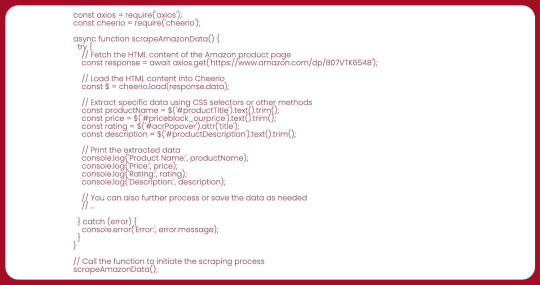
Challenges and Constraints in Extracting Data from E-commerce Websites
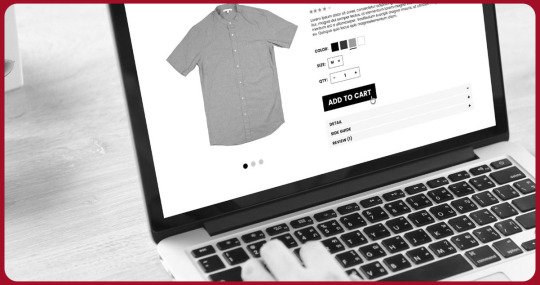
E-commerce data scraping offers valuable insights and competitive advantages but comes with challenges and limitations.
Dynamic Website Changes: One major challenge is the ever-evolving nature of e-commerce websites. These platforms frequently update their designs, making it challenging to develop consistent scraping scripts for reliable data extraction. Furthermore, some e-commerce sites employ anti-scraping techniques like CAPTCHAs or IP blocking to deter automated scraping.
Vast Data Volumes: The sheer volume of data on e-commerce websites can be overwhelming. With millions of products available, large-scale data extraction with e-commerce data scraping services can strain resources and consume significant time. Practical scraping tools must efficiently manage large datasets without causing server overload or technical complications.
Ethical Considerations: Ethical concerns also come into play in e-commerce data scraping. Some scraping practices using e-commerce data scraper may infringe upon copyright laws or violate a website's terms of use, potentially leading to legal repercussions. Moreover, scraping that involves accessing customer data such as emails or purchase histories can be perceived as an invasion of privacy, raising ethical questions.
Navigating these challenges and respecting ethical boundaries is essential for successful and responsible e-commerce data scraping.
Get in touch with iWeb Data Scraping today for more information! Whether you require web scraping service and mobile app data scraping, we've covered you. Don't hesitate to contact us to discuss your specific needs and find out how we can help you with efficient and reliable data scraping solutions.
Know More: https://www.iwebdatascraping.com/e-commerce-data-scraping-on-ten-different-platforms.php
#HowToPerformECommerceDataScraping#ScrapeAmazonecommercedata#AmazonecommercedataScraper#ScrapeRakutenecommercedata#ScrapeTargetecommercedata#ScrapeMacysecommercedata#BestBuyecommercedata
0 notes
Link
Rakuten is known as amongst the largest e-commerce stores worldwide. It is also known as the "Amazon of Japan".
Rakuten permits consumers to search coupons, promo codes, as well as discounts, which thousands of retailers offer. You may also have cash back savings using online rebates to shop online.
They have many retailers of various categories so that you can get something for the entire family for enjoying all whereas enjoying discounts as well as cash back.
Also, you may utilize our data scraper like Retailgators for analyzing what rewards or discounts your competitors as well as other retail websites are providing.
Rakuten And Web Scraping
In case, you're a retail business or somebody trying to get an ideal gift this season, Retailgators could help you out!
Today, we'll understand you to scrape data from an e-commerce site like Rakuten for helping you take the finest decision in the holiday season!
So let's get started!
Extracting Rakuten DataLet’s Start
1. First, ensure to download as well as install Retailgators Rakuten data scraper. Once installed, just open it.
2. After that, click on a “New Project” tab and enter URL for results page that you’d love to extract. For the project here, we will scrape the “toys, baby, & kids" category. Just copy the URL in case, you would love to go along.
3. When you submit the URL, a page will extract inside this app. Now, you're ready for scraping Rakuten data.
Extracting Business Name As Well As Offerings
1. To begin, scroll down as well as click on initial business name in the list. This will get highlighted in the green color to specify that it has been chosen.
2. You would notice that next businesses on a page would get highlighted in the yellow color, click on 2nd business name on a list for selecting them. They all should get highlighted in the green color. On a left-hand sidebar, rename the selection with business.
3. Now, Retailgators is pulling name as well as directory URL. On left-hand side, use PLUS(+) sign next to product selection as well as choose “Relative Select” option.
4. For doing so, use Select command and click on "X" button on a pop-up to choose it. You could rename the command to more descriptive through clicking on a command itself. We have given is a name called "closePopup".
5. Increase your selection offering and delete business_offering_url as the URL goes to the signup page.
This should look somewhat like this:
Now, let's extract data from individual businesses for grabbing more valued data.
Extracting Business Data
To do that, we would make Retailgators click on each business name for scraping data about every listing.
Now, Let's Begin Extracting Specific Business Data
1. Initially, click on PLUS(+) sign subsequent to business selection as well as select a “Click” command.
2. A pop-up would appear asking in case, the selection is the “next page” button. Then, click “No” as well as choose “Make New Template”. Give it a name called business_page as well as click on “Make New Template”
3. The initial business page on a given list would open in the Retailgators scraper. Although, when you click on the business name, one popup will come telling visitors for signing up. We would require to tell Retailgators about clicking on "X" for the window to get closed before start scraping data.
4. For doing that, use the Select tab, click on "X" button in the pop-up for selecting it. You could rename the command to somewhat more descriptive through clicking on a command itself. Let's give it a name called "closePopup".
5. Just click on PLUS (+) following to "Select & Scrape closePopup", as well as select Click tab from a toolbox.
6. Another pop up will come and ask in case, it is the next button, then click on ‘no’ option and choose "continue scraping current template" alternative
Now, It’s Easy To Extract Data Properly!
Click on PLUS(+) sign subsequent to “page” selection, pick the Select command as well as you would create new pick commands as well as click more data for scraping. Scroll down till you have “special conditions” as well as click on content which is there.
2. Repeat the last step to scrape Rakuten data like cashback facts, description, as well as shopping secrets.
3. Now let's scrape their promo as well as coupon offers. Just click on PLUS(+) sign following the “page” collection, pick the Select command, as well as click on the discount titles. Just click on other coupon title, which is highlighted in the yellow color to choose them. Just rename the collection to promo.
/p>
4. Then click on PLUS(+) sign following the “promo” collection as well as select the qualified select command. Then click on first title on a list as well as then on cash back given below. One arrow will appear to show relation. Just rename the selection with "offering".
When everything is completed, the Business_page template needs to look like that:
Run And Export Your Project
Now, as we are completed setting the project, the time will come to run the scraping Rakuten data job.
On left-hand sidebar, just click on "Get Data" tab and click "Run" button for running your scrape and you'll be taken at this page:
For lengthier projects, we suggest doing the Test Run for verifying that the data would be correctly formatted.
After scraping Rakuten data job gets completed, you would download the data you’ve asked as a useful spreadsheet or like the JSON file.
Conclusion
Retailgators can extract all types of sites to assist you scrape Rakuten data you require to take the best decision.
In case, you're a marketing company doing industry or competitor analysis or a client trying to get the finest deals, Retailgators can scrape important data within minutes!
For more details, contact Retailgators or ask for a free quote!
source code: https://www.retailgators.com/how-to-extract-a-website-like-rakuten-with-scraping-offerings-and-discounts.php
#scrape rakuten product data#extract rakuten product data#scrape data from rakuten#extract data from rakuten#rakuten data scraper
0 notes
Text
How to Use Web Scraping for MAP Monitoring Automation?

As the market of e-commerce is ever-growing, we can utilize that online markets are increasing with more branded products getting sold by resellers or retailers worldwide. Some brands might not notice that some resellers and sellers sell branded products with lower pricing to get find customers, result in negative impact on a brand itself.
For a brand reputation maintenance, you can utilize MAP policy like an agreement for retailers or resellers.
MAP – The Concept

Minimum Advertised Pricing (MAP) is a pre-confirmed minimum price for definite products that authorized resellers and retailers confirm not to advertise or sell or below.
If a shoe brand set MAP for A product at $100, then all the approved resellers or retailers, either at online markets or in brick-&-mortar stores become grateful to pricing not under $100. Otherwise, retailers and resellers will get penalized according to the MAP signed agreement.
Normally, any MAP Policy might benefit in provided aspects:
Guaranteed fair prices and competition in resellers or retailers
Maintaining value and brand awareness
Preventing underpricing and pricing war, protecting profit limits
Why is Making the MAP Policy Tough for Brands?
1. Franchise stores
A franchise store is among the most common ways to resell products of definite brands. To organize monitoring of MAP Violation of the front store retailers, we could just utilize financial systems to monitor transactions in an efficient way.
Yet, a brand still can’t ensure that all sold products submitted by franchise stores are 100% genuine. It might require additional manual work to make that work perfectly.2. Online Market Resellers

If we look at research of the Web Retailers, we can have a basic idea about world’s finest online marketplaces. With over 150 main all- category markets across the globe, countless niche ones are available.Online retailers which might be selling products in various online marketplaces
Certainly, most online retailers might choose multiple marketplaces to sell products which can bring more traffic with benefits.Indefinite resellers without any approval
Despite those that sell products using approval, some individual resellers deal in copycat products that a brand might not be aware of.
So, monitoring pricing a few some products with ample online markets at similar time could be very difficult for a brand.
How to Find MAP Violations and Defend Your Brand in Online Markets?
For outdated physical retail, a brand require a business system to record data to attain MAP monitoring. With online market resellers, we would like to introduce an extensively used however ignored tech data scraping which can efficiently help them in MAP monitoring.
Consequently, how do brands utilize data scraping for detecting if all resellers violate an MAP policy?
Let’s assume that one online reseller is selling products on different 10 online websites like Amazon, Target, JD, Taobao, eBay, Rakuten, Walmart,Tmall, Flipkart, and Tokopedia.
Step 1: Identify which data you need?

Frankly speaking, for MAP monitoring, all the data needed include product information and pricing.
Step 2: Choose a suitable technique to make data scrapers.
We need to do 10 data scrapers to collect data from corresponding markets and scraping data in a definite frequency.
A programmer need to write 10 scripts to achieve web scraping. Though, the inadequacies are:
Trouble in maintaining web scrapers if a website layout is changed.
Difficulty to cope with IP rotations as well as CAPTCHA and RECAPTCHA.
A supernumerary selection is the use of a data scraping tool made by Actowiz Solutions. For coders or non-coders, this can provide ample web scraping.
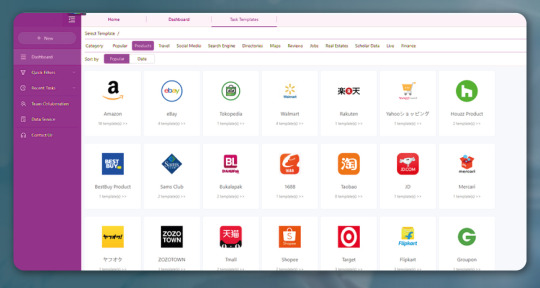
2. Automatic crawler: Also, the latest Actowiz Solutions’ scrapers enable auto data detection and creates a crawler within minutes.

Step 3: Running scrapers to collect data on 10 online markets. To get MAP monitoring, we need to scrape data at definite frequencies. So, whenever you prepare a scraper utilizing computer languages, you might have to start scrapers manually each day. Or, you could run the script with an extraction frequency function written with it. Though if you are using a web scraping tool like Actowiz Solutions, we could set the scraping time consequently.
Step 4: Subsequently after having data, whatever you should do is just go through the required data. Once you recognize any violating behaviors, you can react to it immediately.
Conclusion
For brands, MAP is very important. It helps in protecting the brand reputation and stop pricing war amongst resellers or retailers and offer more alternatives to do marketing. To deal with MAP desecrations, some ideas are there and you can search thousands of ideas online within seconds. Using MAP monitoring, it’s easy to take benefits from web extraction, the most profitable way of tracking pricing across various online markets, Actowiz Solutions is particularly helpful.
For more information, contact Actowiz Solutions now! You can also reach us for all your mobile app scraping and web scraping services��requirements
9 notes
·
View notes
Text
What is Rakuten Data Scraping Services?
With Rakuten price monitoring, it’s easy to provide reports with actual Rakuten pricing in real-time. Utilize Rakuten drop shipping for syncing products straight from Rakuten to the database or API.
About Rakuten
Rakuten, Inc. deals in the Internet services business. It works in segments like Internet Services, Mobile, and FinTech. This company was established on 7th February 1997 by Hiroshi Mikitani and it has its headquarter is in Tokyo, Japan. This division of Internet Services handles e-commerce, travel booking, online cash-back, and digital & portal content websites. The FinTech division offers services over the internet associated with securities and banking, life insurance, credit cards, as well as electronic money. The Mobile division manages communication and messaging sales and services of mobile devices.
iWeb Scraping provides the Best Rakuten Data Scraping services to scrape or extract the Rakuten website. Our range of services includes Rakuten Data Extraction, Rakuten Price Tracking, Rakuten Web Scraping Services, Rakuten price monitoring, Rakuten content extraction, Rakuten drop shipping and more.
Listing Of Data Fields
At iWeb Scraping, we scrape the following data fields from the Rakuten website:
Coupon Codes
Deal Image
Deal Title
Deal URL
Expiry Date
Starting Date
Name
Description
SKU ID
Images
Features
Options
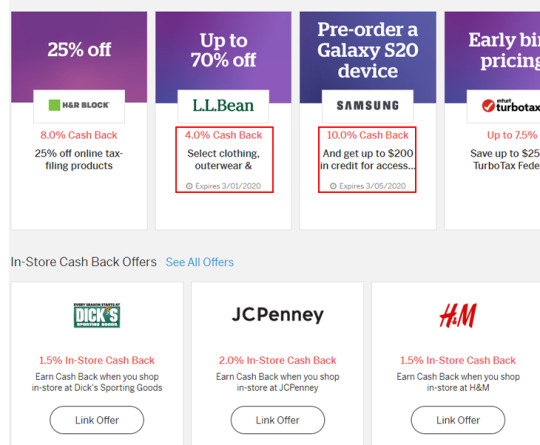
You will receive reports of real Rakuten pricing in actual-time. We can directly sync products from Rakuten getting your online store straight to the API or database. We have different modules for straight data import in online stores. We provide online solutions for data scraping and scrape data from a website. We offer well-managed Rakuten web data scraping or Rakuten price monitoring services for different businesses.
With Rakuten price monitoring, it’s easy to provide reports with actual Rakuten pricing in real-time. Utilize Rakuten drop shipping for syncing products straight from Rakuten to the database or API. We provide well-managed Rakuten data scraping and Rakuten price monitoring services for your business. You can utilize Rakuten Data Scraping for Rakuten Drop Shipping and transfer data from the Rakuten web site into a store.
1 note
·
View note
Text
This Billion Dollar Company Considers Privacy Laws a Threat to Its Business
ZoomInfo, a data broker that collects contact information by harvesting it from peoples' email inboxes, sees increased attention on privacy legislation as a core risk to its billion dollar business, according to public records.
A recent filing from ZoomInfo's public offering shows in stark detail how valuable contact data can be, and how companies in the data harvesting space see their business as potentially impacted by changing perceptions around privacy. ZoomInfo went public in June, raising nearly a billion dollars.
One of ZoomInfo's products is its vast contact database that lets customers look up the email addresses and phone numbers of specific people. ZoomInfo collects this contact data via its "contributor network" of users of its free Community Edition as as well "many of our paying customers," the filing reads. The filing says "Our intelligence is kept up to date in real time."
Do you work in a data selling industry, or did you used to? We'd love to hear from you. Using a non-work computer or phone you can contact Joseph Cox securely on Signal on +44 20 8133 5190, Wickr on josephcox, OTR chat on [email protected], or email [email protected].
In short, users can access the Community Edition of ZoomInfo—giving the user access to the company's data—in exchange for downloading and using ZoomInfo's Contact Contributor software, which a user links to their email provider and which then scrapes the data ZoomInfo is interested in. This includes the users' business contacts, email headers, and email signature blocks, according to a disclaimer on its website.
This contributor network approach captures 50 million records everyday, the filing says.
ZoomInfo also collects information from integration with its own customer's customer relationship management (CRM) systems, the filing adds.
"Search and Find Anyone's Email Address, Direct Phone Number and Much More," ZoomInfo's website reads. "ZoomInfo’s database provides access to over 209 million professional profiles and 13 million business profiles." The target audience for these sorts of contact tools is sales and marketing teams.
ZoomInfo does appear to collect consent from its free users to collect their data before they download the company's software, but ZoomInfo does see legislation around privacy as a potential risk to the company.

A section of ZoomInfo's filing. Image: Screenshot.
The filing says one risk is ZoomInfo's ability to adapt "our platform for changes in laws and regulations or public perception, or changes in the enforcement of such laws, relating to data privacy." Specifically, ZoomInfo points to the European Union's General Data Protection Regulation (GDPR), the California Consumer Privacy Act (CCPA), as well as the Federal Trade Commission's (FTC) "increasingly active approach to enforcing data privacy in the United States."
"The uncertain and shifting regulatory environment and trust climate may cause concerns regarding data privacy and may cause our vendors, customers, users, or our customers’ customers to resist providing the data necessary to allow us to offer our services to our customers and users effectively, or could prompt individuals to opt out of our collection of their personal data. Even the perception that the privacy of personal data is not satisfactorily protected or does not meet regulatory requirements could discourage prospective customers from subscribing to our products or services or discourage current customers from renewing their subscriptions," the filing reads, adding that the CCPA is making it easier for people to opt-out of having their data collected.
Ultimately, this could lead to less valuable data, with "a decrease in participation in our contributory network or increased opt-out rates impacting the depth, breadth, and accuracy of our platform," the filing adds.
ZoomInfo told Motherboard in a statement, “ZoomInfo takes data privacy and security very seriously. We have strict policies in place to comply with privacy and data protection laws. We only collect business contact information, i.e., the information that is customarily found on a business card, and our privacy practices go well above and beyond those of our peers and what is required by law.”
“We also provide active notification to all of our contacts in the EU and California—even where we are not required to do so. We have expanded this notification program across our entire database so that consumers in every jurisdiction have the same notice and choice,” the statement added.
Many other companies harvest or build products on top of the contents of users' email inboxes. Motherboard reported how email productivity app Edison scraped user inboxes for profit, as well as other companies Foxintelligence and Rakuten.
Subscribe to our cybersecurity podcast, CYBER.
This Billion Dollar Company Considers Privacy Laws a Threat to Its Business syndicated from https://triviaqaweb.wordpress.com/feed/
0 notes
Link

#scrapingdailydeals#dailyscrapingservices#webscrapingservices#webdataextraction#dailydealsmonitoring#logicwis
0 notes
Text
What Are The Top Challenges Facing Fashion Brands & Retailers In 2019?
Those who regularly follow our blog will be aware that we’ve previously written about the challenges to various industries including travel, hotels and retail. Continuing that trend, in this blog post, we’ve decided to investigate some of the current challenges faced by fashion brands and retailers. We’ll be exploring the following: Social media networks, influencers & trust The high street vs online Responding to the concerns of a ‘woke’ generation Online marketplaces Lack of an adequate SEO strategy So, what are you waiting for, lets dive straight in… Social Media Networks, Influencers & Trust While SEMrush has identified that social media is a less significant source of traffic for online fashion stores globally compared to other sources, that’s not to say it isn’t still a powerful force for setting trends, raising brand awareness and assisting in the increase of sales. This is particularly the case for Instagram, which has been shoppable since 2016, who claim that a third of its users have bought an item of clothing they discovered while using the social network. Between carefully curated photos and well thought out partnerships with influencers/ambassadors, it’s unsurprising that fashion brands and retailers should thrive on this highly visual platform. That said, an increasing scepticism and lack of trust associated with social networks and influencers presents a blocker to fashion brands and retailers’ success via this channel. According to Dealspotr, Millennials in particular are losing trust in online influencers when it comes to discovering and buying fashion online. While there are FTC guidelines on disclosing ads on social networks, they are often ignored or implemented incorrectly. This only adds to confusion and distrust amongst followers. A survey of more than 1,000 shoppers conducted for BBC Radio 4 also discovered that most shoppers do not trust social media influencers. Staggeringly, 82 percent of people were not always clear when an influencer has been paid to promote a product. What’s more, in a post Cambridge Analytica climate, there remains a sense of cynicism by social users surrounding their personal data and how it is used. The 2018 Trust Barometer Special Report: Brands and Social Media by Edelman found that 60 percent of people no longer trust social media networks. More specifically, independent research firm Ponomon Institute reported last year that trust in Facebook had plunged by 66 percent. This decline in trust when it comes to social media, influencers and ads presents one of the biggest challenges facing retailers and fashion brands today. So, what can fashion brands and retailers do to counter this? Moving forward, it’s clearly imperative that brands demonstrate complete honesty and transparency with social followers about how their data is being collected and used. In terms of influencers, many businesses are now adopting the tactic of pursuing collaborations with micro influencers. While they have a smaller number of followers, micro influencers tend to have more niche, loyal and highly engaged audiences compared to those with high profiles or celebrity status. With this in mind, fashion brands and retailers might want to jump on the bandwagon. Not only are micro-influencers more affordable but they’re viewed as more genuine and trustworthy by consumers. If you’re just getting started with influencer marketing or are looking for advice, check out our A-Z guide to influencer marketing. The High Street Vs Online These days, it’s almost predictable to turn on the news to hear that yet another high street retailer is either closing down or closing many of its stores. Undoubtedly, a significant factor for the demise of high-street retailers is the lure and convenience of online shopping. According to a PWC survey, high street exits (including those by fashion retailers) remain at a historic high. Indeed, the top net fallers in 2018 were banks and financial services – followed in close second by fashion retailers. Most recently, it was announced that Gap intends to close over 200 stores worldwide as its US parent company launches a massive restructuring programme. Arcadia Group, which owns the likes of Topshop, Burton and Miss Selfridge, at the time of writing, is also looking likely to be put into administration. Last year, it was House of Fraser which took a knock – with 20 of its 59 stores across the UK expected to close, including its London Oxford Street store. Depressing stuff for those on the high-street. On the flip-side, the likes of Boohoo, PrettyLittleThing and Nasty Gal, all exclusively online women’s fashion retailers, recently announced strong growth. Boohoo, was particularly impressive, boasting a 97% leap in revenue from March 2018 – 2019. There are multiple factors that might be the reason behind the successful performance of online fashion retailers compared to high street footfall, such as the rise in mobile shopping and the ease with which purchases can be made online to name a few. Whilst the stats don’t look good for high street fashion retailers, all is not lost. In fact, there’s often increasing demand from online brands to open physical stores, to cater to shoppers who want to try products on instore before they commit to buying – think Missguided at Bluewater. We believe that the key is to take an omnichannel approach to the online/offline shopping experience. After all, very few people shop exclusively online or only in store, but rather combine the best of both. For fashion retailers that have both a high street and online presence, navigating the two can be a challenge. Nonetheless, we have some top tips for how to do so: Enhance an excellent instore customer experience by utilising engaging technologies such as VR and augmented reality. Make payment on and offline quick and easy. If your issues lie solely with getting footfall to a brick and mortars store, consider running exclusive instore deals and discounts. Perhaps most importantly, if you’ve opened or own brick and mortar stores, you’ll need to make sure you get your local SEO right! Responding to the Concerns of a ‘woke’ Generation Young people today are increasingly concerned with any deemed societal injustice, particularly social and environmental causes, which has led to what’s been labelled a generation of ‘woke’ young people. With regards to the fashion industry, sustainability is currently high on the agenda for many young consumers and they increasingly favour fashion brands who are in alignment with their values. This movement has even seeped into the political sphere with the environmental audit committee recently calling on the government to make fashion retailers take responsibility for the waste they create and put an end to an era of ‘throwaway fashion’. Fashion brands who are taking these concerns seriously include PrettyLittleThing which recently launched a new line of clothes in April which are made from recycled materials. They also announced a partnership with Regain – a recycling app. This collaboration aims to prevent unwanted clothes heading to the landfill. It allows users to donate unwanted clothes at pick up points and, in return, they receive discounted codes that can be used with Regain’s retail partners which includes the likes of Missguided, Boohoo, New Look and SuperDry. It’s not just the planet and concerns about workers’ rights however that influence young people’s fashion buying decisions. Consumers are increasingly championing brands that embrace diversity and represent all types of people (regardless of age, sex, race religion and ability). Interestingly, a data scrape of over 2000 fashion retailers, cited by the State of Fashion 2019 report, revealed the appearance of the word “feminist” on homepages and newsletters increased by a factor of more than 5 from 2016 to 2018. However, a fashion brand or retailer advocating any cause can prove risky for their reputation. There’s always a likelihood that existing or potential customers will not support the cause in question. Alternatively, others might criticise it as a transparent marketing ploy and question whether it’s a genuine value shared by the company. Primark are a prime example of this. In 2018, the fashion retailer was criticised for releasing a collection of Pride themed t-shirts which were produced in Turkey – a country ranked third worst in Europe for LGBTQ equality. Ultimately, fashion retailers face a risk to their reputation if they are seen to be supporting a cause merely for gimmicks/PR opportunities as opposed to genuinely believing in it. Clearly, in order to thrive today, fashion brands and retailers will have to do more in terms of their corporate, social and environmental responsibility. Here are our top dos and don’ts for demonstrating that you, as a fashion retailer or brand, are listening to the concerns of a ‘woke’ generation: Be genuine. Take a stand on something that inspires a personal passion. Don’t capitalise on a crisis. Cynical customers will be able to see right through it, not to mention that it’s insensitive. Be fully clear about what statements you want your brand to make or support. Be consistent in this message across all communication channels. Ask yourself the question: “why would my audience care”? Learn from those brands who’s ‘woke’ marketing has backfired. Take Nike, who’s controversial advertisement last year saw a boycott of their goods. Online Marketplaces Online marketplaces, such as Amazon, Alibaba, eBay, Zalando, ASOS marketplace and Rakuten, can present both risks and rewards for fashion brands and retailers. For well-known fashion brands, it can prove a smart step to join one. Almost half of online sales are made on marketplaces, it typically has positive implications for SEO and can help brands reach more consumers. Smaller fashion brands tend to avoid it due to shipping costs and commissions eating into margins, and their brand getting ‘lost in the crowd’. There’s also an element of loss of exclusivity which stems from the sheer scale and popularity of these platforms. However, fashion brands that opt out of marketplaces tussle with having to work extra hard to establish and please their customer base. Indeed, with their huge selections and low prices, the likes of eBay and Amazon have become the ‘default’ online shopping destination for many. Amazon has been a particularly big gamechanger, with 44 percent of shoppers looking for an item there first before searching via Google or going directly to a retailers website. In order to compete with these big players, there are some things you can do: Offer an exceptional, personalised service. Friendly, helpful and knowledgeable staff who can be contacted via phone, email or social channels will gain your fashion brand more of an edge over sophisticated online marketplaces. Be flexible and offer a variety of payment/collection models such as ‘click and collect’. Make the returns process on your items is as simple as possible. According to Gartner, 92% of customers will buy again if returns are easy. Ultimately, these online marketplaces have raised the bar in terms of what consumers expect and are the basis by which shoppers judge other online shopping experiences. Therefore, it’s critical for independent fashion retailers to provide an exceptional shopping experience online. Inadequate SEO Strategy In April, it was hard not to avoid the news of ASOS’ 87% drop in profits. But what went wrong for the fashion retailer, exactly? Well, in essence, ASOS launched 200 versions of its website depending on which country the customer was in. This had a negative impact on ASOS’ search engine rankings (and, consequently, the traffic to their site). In addition to this, they made multiple changes to the way users navigate around the website and to the display of new products. In light of this, you probably read a fair few ‘let’s bash ASOS’ type blog posts regarding their ‘disastrous’ SEO strategy. This isn’t another one of those. For one, blaming the ASOS digital team entirely is simplistic. Expansion costs and discount campaigns have been cited as additional contributors to the drop in profits, not just SEO instability. Plus, there was likely sound strategic thought and good intentions underlying the digital teams’ decision making process. That said, industry professionals are right to highlight what ASOS clearly did not do. One thing being that they probably failed to use thorough A/B testing to discover the impact the planned changes would have on user behaviour. It’s also been pointed out than an experienced SEO should have picked up on the potential problems ahead. This suggests that, while ASOS does have an internal SEO team, they were either not listened to or they were not utilised effectively. Ultimately, this highlights the threat faced by fashion brands and retailers in the event of failing to implement in-depth testing ahead of mass, site wide changes. It also drives home the need to actively listen to SEO expertise when it’s provided. So, there you have it, the top challenges facing fashion brands and retailers in 2019. Do you own, or work for, a fashion brand or retailer? Have you identified any additional challenges to the industry that we’ve missed in this blog post? If you’d like to discuss them with us, or any of the above, please let us know in the comments below, we’d love to hear your thoughts and feedback. Are you looking for some insight on using influencers for your fashion brand or do you require an in depth, SEO strategy for the year ahead? Get in touch with our team via the form below, we’d love to help out! Contact Us Name* First Last Email* Message*NameThis field is for validation purposes and should be left unchanged. jQuery(document).bind('gform_post_render', function(event, formId, currentPage){if(formId == 13) {} } );jQuery(document).bind('gform_post_conditional_logic', function(event, formId, fields, isInit){} ); jQuery(document).ready(function(){jQuery(document).trigger('gform_post_render', [13, 1]) } );
0 notes
Text
What is data scraping? Purpose and examples of data scraping.
Purpose of data scraping
Scraping can collect information on the Internet and process the acquired information. The more detailed the data is extracted, the deeper the data analysis will be.
Data scraping tools
There are many web scraping tools developed to get the information you need on your website. ScrapeStorm is a web scraping tool based on artificial intelligence. It does not require programming and scrapes data from most websites. 1-Click automatically extracts data from your website.

Grasp popular topics
Video media such as TikTok and Instagram have been popular for the past few years. However, for video creators, updating the topic is also quite fast. At such times, data collection plays a role in quickly grasping the topics that are currently in fashion. Collect popular topics and ideas, or collect data such as comments and views.

Marketing
Since online shopping has been welcomed by people, Amazon, Yahoo! Shopping, Rakuten Ichiba, and various online shopping sites enter people’s daily lives. For sellers, collecting data such as product reviews and overall scores is important for marketing. It is also important to compare the prices of products on each online shopping site. Timely adjustment of prices will surely not separate into data collection.

Finance
A large amount of data is required for investments such as real estate investment, investment trusts, and stock prices. It can be very difficult to predict a fast-moving market. It may be useful for financial investment by collecting and analyzing data since several months.
This time, we will introduce examples of use in video media, marketing, etc., but of course, there are only the above areas. One thing to note is that it is against the law to send a malicious request by scraping! Please use it correctly to discuss Robots and comply with the law.

0 notes
Text
Rakuten Product Details Scraping
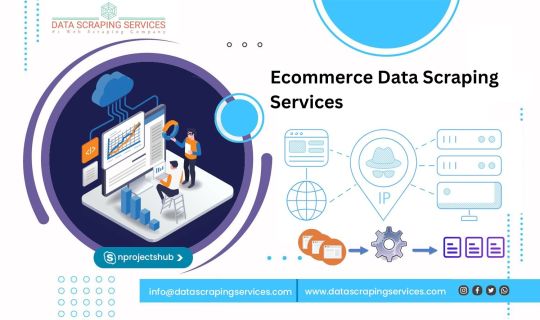
Elevate Your E-Commerce Strategy: Unleashing the Power of Rakuten Product Details Scraping by DataScrapingServices.com
In the competitive landscape of e-commerce, staying ahead in the market requires not only innovative products but also strategic insights into the offerings of competitors and industry trends. DataScrapingServices.com introduces a game-changing solution with its Rakuten Product Details Scraping services, offering businesses valuable insights into the vast e-commerce platform. This article explores the significance of Rakuten Product Details Scraping and the unique advantages provided by DataScrapingServices.com.
Navigating the Rakuten E-Commerce Universe
As one of the world's leading e-commerce platforms, Rakuten hosts a diverse array of products from various sellers. The Rakuten Product Details Scraping services by DataScrapingServices.com enable businesses to systematically extract detailed information about products listed on Rakuten. This comprehensive approach empowers businesses with actionable data to refine their product strategies, optimize pricing, and stay competitive in the ever-evolving e-commerce landscape.
1. Competitive Analysis for Informed Decision-Making
For businesses operating in the e-commerce space, understanding the product landscape of competitors is critical. Rakuten Product Details Scraping allows businesses to conduct in-depth competitive analysis by extracting information such as product titles, descriptions, prices, and customer reviews. This granular data provides valuable insights into market trends, pricing strategies, and customer preferences, enabling businesses to make informed decisions in their product offerings.
2. Pricing Optimization and Market Positioning
Effective pricing is a key element in the success of any e-commerce business. Rakuten Product Details Scraping services offer businesses the ability to monitor and analyze pricing trends across the platform. By extracting data on product prices, discounts, and promotional offers, businesses can optimize their pricing strategies, ensuring competitiveness and maximizing profitability in the dynamic e-commerce market.
3. Product Catalog Enrichment
Maintaining a rich and diverse product catalog is essential for attracting and retaining customers. Rakuten Product Details Scraping allows businesses to enrich their product catalogs by extracting detailed information about product specifications, features, and images. This enriched product data can be utilized to enhance product listings, improve search relevance, and provide a more engaging shopping experience for customers.
The DataScrapingServices.com Advantage
DataScrapingServices.com stands as a trusted provider of web scraping solutions, and its expertise in Rakuten Product Details Scraping offers distinct advantages for businesses seeking to optimize their e-commerce strategies.
1. Precision and Real-Time Updates
DataScrapingServices.com employs advanced scraping technologies to ensure the precision and real-time nature of the scraped Rakuten product details. This commitment to accuracy provides businesses with insights that reflect the current e-commerce landscape, allowing for agile decision-making and timely adjustments to product strategies.
2. Comprehensive Data Extraction
Recognizing the diverse needs of businesses, DataScrapingServices.com ensures comprehensive data extraction from Rakuten. This includes details such as product titles, descriptions, prices, images, and customer reviews. This comprehensive approach allows businesses to have a holistic view of the Rakuten product landscape, facilitating informed decision-making.
3. Customization for Specific Requirements
Understanding that businesses may have unique requirements, DataScrapingServices.com provides customization options for its Rakuten Product Details Scraping services. This flexibility enables businesses to tailor the scraping process based on specific criteria, ensuring a more personalized and targeted approach aligned with their e-commerce goals.
4. Data Security and Ethical Practices
In an era where data integrity and security are paramount, DataScrapingServices.com prioritizes compliance with legal standards and terms of use. Rakuten Product Details Scraping services adhere to industry regulations, ensuring that businesses extract valuable insights ethically and within legal boundaries.
Best eCommerce Data Scraping Services
Web Scraping eBay.co.uk Product Listings
Amazon Reviews Scraping
Extract Zalando Product Prices
Argos Product Listing Scraping
JohnLewis Product Details Scraping
Sephora Product Prices Scraping
G2 Product Information Extraction
Capterra Product Reviews Scraping
eBay.co.uk Product Prices Scraping
Amazon.de Product Prices Scraping
Best Rakuten Product Details Scraping | Rakuten Scraper Services in USA:
Kansas City, Memphis, New Orleans, Springs, Sacramento, Tucson, Washington, Portland, Atlanta, Seattle, San Jose, San Antonio, Raleigh, Colorado, Jacksonville, Omaha, Louisville, Denver, Dallas, Miami, Los Angeles, Philadelphia, Bakersfield, Milwaukee, Tulsa, Las Vegas, Chicago, Long Beach, Arlington, Austin, Columbus, San Francisco, Nashville, Honolulu, Wichita, Orlando, Oklahoma City, Indianapolis, Boston, El Paso, Fort Worth, Virginia Beach, San Diego, Albuquerque, Houston and New York.
Conclusion
Rakuten Product Details Scraping by DataScrapingServices.com emerges as a strategic asset for businesses aiming to thrive in the competitive world of e-commerce. By unlocking the power of scraped product data, businesses can refine their competitive strategies, optimize pricing, and enhance their product catalogs. Choose DataScrapingServices.com for a strategic partnership that transforms raw Rakuten product data into a valuable asset, driving success and growth in the dynamic and competitive e-commerce landscape.
Website: Datascrapingservices.com
Email: [email protected]
#rakutenproductdetailsscraping#rakutenscraper#ecommercedatascraping#ecommerceproductscraping#ecommerceproductlistingscraping#datascrapingservices#webscrapingexpert#websitedatascraping
0 notes
Text
Semalt Explains How To Scrape Websites With Node.js

Node.js is a cross-platform, open-source JavaScript framework that helps execute data from different websites. It is primarily used for client-side scripting, where codes and scripts are written in JavaScript and embedded in a site's HTML. Node.js allows you to use JavaScript server for producing dynamic web content. It is one of the most famous and fundamental elements of JavaScript paradigms that allows developers and programmers to perform a variety of tasks.
Unlike other JavaScript frameworks, Node.js doesn't refer to a specific file and is a name of a project. It is known for its well-versed architecture and ability to perform multiple data scraping tasks at a time. Node.js helps optimize different web pages and provides scalable and readable data. It scrapes data in real-time and is licensed by the Linux and the Node.js Foundations.
Scrape a website with Node.js:
Node.js is the prior choice of GoDaddy, Groupon, IBM, Microsoft, LinkedIn, PayPal, Netflix, SAP, Rakuten, Tuenti, Walmart, Yahoo, Cisco Systems and Voxer.
The basic workflow of Node.js is as follows:
Launch the web scraper;
Insert a website URL and allow your scraper to perform its function;
The scraper will make requests to the target-site and start performing its data extraction tasks;
It will capture the HTML of your site and traverse the DOM;
In the final step, your scraper will extract data and save it in a suitable format;
Node.js was first written and introduced by Ryan Dahl a few years ago. It was maintained by Joyent and Dahl. Earlier this year, two advanced package managers were launched for the Node.js users. NPM is the most famous package manager. With it, you can easily publish and share your data. NPM was designed to simplify the process of data extraction and provide quality information.
Create different web servers and networking tools with Node.js:
Amazingly, Node.js allows you to create various networking tools and web servers. Its modules and managers are provided for various data extraction projects. You can also use them for binary data, data stream, cryptography function, and other similar functions. Node.js uses APIs to scrape dynamic content and write server applications for its users. You can run Node.js' applications on Mac OS, Linux, Microsoft, NonStop, Unix, and Windows.
Build network programs with this framework:
You can use Node.js to build different network programs on the net. One of the major differences between PHP and Node.js is that PHP blocks your IP address, but the functions of Node.js cannot be blocked. It means you can scrape your data conveniently and don't need to worry about IP blocking.
Node.js is best known for its event-driven capabilities and enables you to develop a web server in JavaScript. As a developer, you can easily create scalable server without any need of DOM parser and strings.
Node.js libraries
There are numerous open-source, well-versed libraries for Node.js. Most of these libraries are hosted on an NPM system and can be accessed anytime and anywhere. With Node.js, you can scrape both dynamic and basic websites with ease.
0 notes
Link
=> #Scraping Pricing #Data for Products | #DataScrapingServices
- Scrape Amazon Product Details and Pricing - Scrape Amazon Product Price, Buy Box Price#Scraping, Price lists etc. - Amazon #Data #Scraping , E bay #Data #Scraping and others E commerce sites Lists - Kohls, Meijer, Macys #Database Lists, Products #Scraping Services - Overstock, Homedepot, Bestbuy, Walmart, Target, Rakuten, Shop, Ebookers etc. - #Extract product #Data feeds from E-commerce #Website - Scrape e-commerce data - Lists of Ecommerce #Websites and Internet Retailer Sales - #Database list of British food ecommerce #Websites - #Data #Scraping / #Database list of US grocery ecommerce #Websites - Ecommerce Mailing Lists - #Database list of eCommerce/Online Shopping sites - #DataScrapingServices, #WebScrapingServices, #EmailScrapingServices
For similar work requirement feel free to #Email us on [email protected]
http://www.webscrapingexpert.com/scraping-pricing-data-for-products/
0 notes
Text
How to Perform E-Commerce Data Scraping on Ten Different Platforms?
How To Perform E-Commerce Data Scraping On Ten Different Platforms?
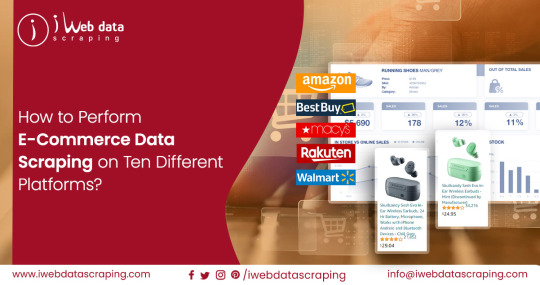
Web scraping, also called data scraping, is a potent method for extracting valuable information from e-commerce platforms such as Amazon and Walmart. Using programming languages like JavaScript and the querySelector function, one can systematically gather the necessary data to enhance decision-making processes. In this article, we will delve into the efficient data extraction from e-commerce websites on a large scale and underscore the significance of this practice. We will explore various techniques and optimal approaches b, along with guidance on leveraging JavaScript and querySelector for data extraction.
List of Data Fields

Product Name
Product Description
Product Codes
RRP
Special Price
Category
Brand
Availability
Product URL
Images
Attributes
Reviews
Ratings
Variants
List of 10 E-Commerce Websites
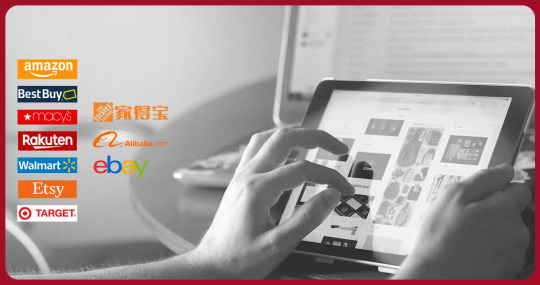
AMAZON: Amazon's e-commerce website is a global retail juggernaut that has revolutionized online shopping. Amazon has become synonymous with convenience and choice, offering an unparalleled selection of products across a multitude of categories. With a user-friendly interface, customers can effortlessly navigate through an extensive array of items, read detailed product descriptions, and make informed decisions based on user reviews and ratings. Scrape Amazon e-commerce data for competitive analysis.
Rakuten: Rakuten's e-commerce website is a prominent global online marketplace offering a diverse range of products and services to customers worldwide. Originally founded in Japan, Rakuten has expanded its presence to become a multifaceted platform that connects consumers with an extensive array of goods, from electronics and fashion to books and home essentials. Scrape Rakuten e-commerce data for price optimization.
TARGET: Target's e-commerce website is a well-established and popular online retail destination in the United States. Known for its wide range of products spanning categories like electronics, home and furniture, clothing, beauty, groceries, and more, Target offers a comprehensive shopping experience to its customers. The website features a user-friendly interface, enabling shoppers to browse and search for products, read detailed product descriptions, and view customer reviews. Scrape Target e-commerce data for market research.
MACY'S: Macy's e-commerce website is a prominent online retail platform that complements the well-known brick-and-mortar department store chain. By catering to diverse consumer needs, Macy's online platform offers various products spanning fashion, beauty, home goods, electronics, and more. The website provides an intuitive and user-friendly interface, making it easy for customers to navigate, search for products, and explore various categories. Scrape Macy's e-commerce data for inventory management.
BEST BUY: Best Buy's e-commerce website is a leading online destination for consumer electronics, appliances, and technology products in the United States and beyond. Renowned for its extensive selection of products, it caters to a wide range of tech enthusiasts, home appliance shoppers, and entertainment seekers. The website boasts a user-friendly interface that simplifies product discovery, allowing customers to browse, compare, and purchase items effortlessly. Scrape Best Buy e-commerce data for content aggregation.
eBay: eBay is a globally recognized and influential e-commerce platform that connects buyers and sellers worldwide. Founded in 1995, eBay has become one of the largest online marketplaces, facilitating the sale of a wide variety of new and used goods. The platform's unique auction-style listings and traditional fixed-price listings offer a diverse and dynamic shopping experience. Scrape eBay e-commerce data for dynamic pricing.
WALMART: Walmart's e-commerce website is a significant online extension of one of the world's largest retail chains. Founded in 1962, Walmart has established itself as a retail giant with a diverse range of products, and its e-commerce platform reflects this breadth and depth. The website offers customers a convenient and extensive shopping experience focusing on value, variety, and accessibility. Walmart's e-commerce website includes many products, including groceries, electronics, apparel, and home goods. Users can browse products easily, read detailed descriptions, and explore customer reviews to make informed purchasing decisions. Scrape Walmart e-commerce data for customer sentiment analysis.
ETSY: Etsy's e-commerce platform is a unique and thriving online marketplace specializing in handmade, vintage, and craft items. Founded in 2005, Etsy has grown into a global community of artisans, crafters, and vintage collectors who sell their one-of-a-kind and creative products on the platform. Etsy's website provides a distinctive and personalized shopping experience, catering to those seeking handmade or unique items. The heart of Etsy's e-commerce website is its diverse catalog of products, including handmade jewelry, clothing, home decor, art, and vintage collectibles. Scrape Etsy e-commerce data for demand forecasting.
Alibaba: Alibaba's e-commerce platform is one of the world's largest and most influential online marketplaces. Founded in 1999 by Jack Ma, Alibaba has grown into a global e-commerce and technology conglomerate with a diverse portfolio of businesses. Alibaba's primary e-commerce websites include Alibaba.com, Taobao, Tmall, and AliExpress, each catering to different markets and customer needs. Alibaba.com is a business-to-business (B2B) platform that connects manufacturers, wholesalers, and suppliers with global buyers. Scrape Alibaba e-commerce data for price comparison.
THE HOME DEPOT: The Home Depot's e-commerce website is a leading online home improvement and construction retail platform. Founded in 1978, The Home Depot has become one of the largest home improvement retailers globally, with physical stores and a robust online presence. The Home Depot's e-commerce website offers many products and services tailored to homeowners, contractors, and do-it-yourself enthusiasts. Customers can explore many items, including building materials, tools, appliances, home decor, gardening supplies, and more. Scrape The Home Depot e-commerce data to understand buying behavior.
About E-Commerce Data Scraping
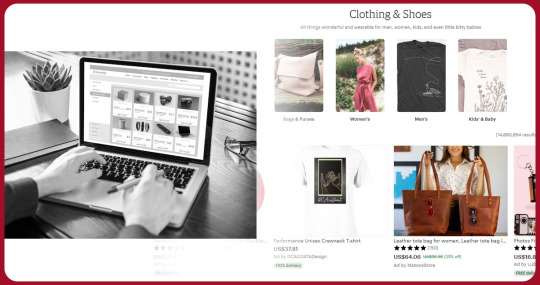
In today's digital era, data holds immense value, driving decision-making, fostering innovation, and enhancing competitiveness across various industries. Data scraping e-commerce websites emerged as a crucial process for extracting insights and supporting informed business decisions, especially when dealing with renowned websites like Amazon and Walmart.
Before diving into data extraction from these websites, it's paramount to grasp the concept of data and identify the specific data types that align with your business objectives. It may encompass collecting diverse data types, such as Product Details Pages (PDPs), search results, seller profiles, customer reviews, ratings, travel and booking data, event information, ticket details, and other pertinent data points.
Web scraping stands out as the most prevalent technique for data extraction, involving the retrieval of information from the HTML code of websites. A fundamental aspect of successful data scraping involves comprehending the website's structure and pinpointing the desired data locations, including product details pages (PDPs). Amazon and Walmart, as two prominent e-commerce platforms, often serve as targets for data extraction efforts. Employing tools and programming languages like JavaScript and Python can streamline the data extraction process from these websites. Nonetheless, scaling up data extraction can introduce challenges, including the need for proxies and strategies to evade anti-bot detection mechanisms.
Importance of Data Scraping for E-Commerce
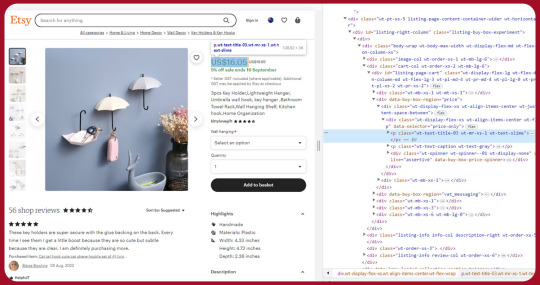
As a business owner, you understand the critical importance of an in-depth understanding of your products to succeed. Comprehensive knowledge of each product, including pricing and specifications, is essential. However, manually collecting such information can be daunting and time-consuming, especially when dealing with a substantial inventory.
It is precisely where data scraping proves invaluable. Data scraping techniques to extract product details from websites enable you to efficiently compile all the information required to enhance your Product Details Pages (PDPs). After determining the specific data types that align with your business model, you can utilize the extracted data for various purposes, including Market Intelligence, Pricing and Competitor Analysis, Product Research and Development, Customer Sentiment Analysis, Inventory Management, and Demand Forecasting.
Usage of JavaScript to Extract Data from Websites

JavaScript stands out as one of the most widely employed programming languages in web development, and its versatility extends to data extraction from websites. JavaScript can be a powerful tool for scraping data from web pages, including valuable information like product descriptions, prices, images, reviews, and more.
Here's a breakdown of how JavaScript extracts data from e-commerce websites efficiently:
Inspect the Webpage: Begin by inspecting the webpage to pinpoint the specific HTML elements containing the data you intend to scrape. The browser's developer tools are handy for this task, allowing you to delve into the webpage's HTML code.
Leverage DOM Manipulation: You can utilize DOM (Document Object Model) manipulation techniques after identifying the HTML elements housing your target data. It uses JavaScript to access and modify these HTML elements, enabling data extraction.
Data Parsing: It is typically unstructured once the data is from HTML elements. You need to parse it into a structured format like JSON or CSV to make it usable. Parsing transforms the raw data into a structured form for analysis.
Automation: For large-scale data extraction from e-commerce websites, automation is critical. While you can write a JavaScript script to automate scraping, employing specialized web scraping tools or programming languages like Python is often more efficient.
Handling Anti-Scraping Measures: Many e-commerce sites employ anti-scraping measures like CAPTCHAs and IP blocking to deter web scrapers. These measures may require rotating proxies or CAPTCHA-solving services to ensure smooth data extraction.

Challenges and Constraints in Extracting Data from E-commerce Websites

E-commerce data scraping offers valuable insights and competitive advantages but comes with challenges and limitations.
Dynamic Website Changes: One major challenge is the ever-evolving nature of e-commerce websites. These platforms frequently update their designs, making it challenging to develop consistent scraping scripts for reliable data extraction. Furthermore, some e-commerce sites employ anti-scraping techniques like CAPTCHAs or IP blocking to deter automated scraping.
Vast Data Volumes: The sheer volume of data on e-commerce websites can be overwhelming. With millions of products available, large-scale data extraction with e-commerce data scraping services can strain resources and consume significant time. Practical scraping tools must efficiently manage large datasets without causing server overload or technical complications.
Ethical Considerations: Ethical concerns also come into play in e-commerce data scraping. Some scraping practices using e-commerce data scraper may infringe upon copyright laws or violate a website's terms of use, potentially leading to legal repercussions. Moreover, scraping that involves accessing customer data such as emails or purchase histories can be perceived as an invasion of privacy, raising ethical questions.
Navigating these challenges and respecting ethical boundaries is essential for successful and responsible e-commerce data scraping.
Get in touch with iWeb Data Scraping today for more information! Whether you require web scraping service and mobile app data scraping, we've covered you. Don't hesitate to contact us to discuss your specific needs and find out how we can help you with efficient and reliable data scraping solutions.
Know More: https://www.iwebdatascraping.com/e-commerce-data-scraping-on-ten-different-platforms.php
#ECommerceDataScraping#ScrapeAmazonecommercedata#ScrapeRakutenecommercedata#ScrapeTargetecommercedata#ScrapeMacysecommercedata#ScrapeBestBuyecommercedata
0 notes
Text

Use simple steps to scrape product listings from Rakuten efficiently. Enhance your e-commerce business by accessing valuable data with web scraping techniques.
#ScrapeProductListingsFromRakuten#scrapingRakuten'sproductlistings#rakutenproductdatascrapingservice#ScrapedatafromRakuten#I#Rakutendatascrapingservices#RakutenProductListingServices#RakutenProductDataScraper#extractdatafromrakuten#extracteddatafromrakuten
0 notes